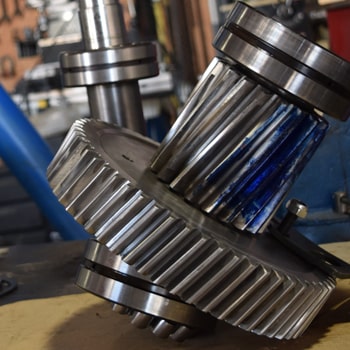Industrial gearboxes are a crucial component in various manufacturing and production processes. They are designed to transmit power and control torque in order to drive machinery and equipment. The selection of the right gearbox is critical to ensuring efficient operation, a long service life, and reduced maintenance costs. In this article, we will take a closer look at the five main types of industrial gearboxes: planetary, bevel, worm, helical, and spur gearboxes.
Planetary gearboxes are a type of gearbox that consists of multiple gears that mesh together in a circular pattern. They are known for their high power density, compact design, and precise speed and torque control. These gearboxes use planet gears that rotate around a central sun gear and are supported by a carrier. Planetary gearboxes can provide high torque at low speeds, making them ideal for applications that require precise speed and torque control. Some common applications of planetary gearboxes include robots, conveyors, and material handling systems. However, they are relatively expensive compared to other types of gearboxes, and their design complexity can result in higher maintenance costs.
Bevel gearboxes are similar to planetary gearboxes in that they are made up of multiple gears that mesh together. However, the gears are arranged in a more angled or beveled configuration. They are commonly used in applications that require a change in direction of the output shaft, as the gears can be designed to provide output in any direction. Bevel gearboxes are known for their high efficiency, meaning that they can transmit power with minimal losses. Some common applications of bevel gearboxes include cranes, winches, and hoists. However, they can be more complex to manufacture and maintain compared to other types of gearboxes, which can result in higher costs.
Worm gearboxes are a type of gearbox that consists of a worm gear and a worm shaft that mesh together to provide power transmission. They are known for their compact design and high torque output. This type of gearbox is ideal for applications that have limited space. Some common applications of worm gearboxes include elevators, material handling equipment, and conveyors. However, they can be relatively inefficient compared to other types of gearboxes, as they can generate a lot of heat and noise during operation, which can result in reduced service life.
Helical gearboxes are similar to bevel gearboxes in that they are made up of multiple gears that mesh together. However, the gears are arranged in a more linear or helical configuration. They are known for their smooth and quiet operation, making them ideal for applications that require low noise levels. Helical gearboxes are highly efficient and can provide high-power transmission with minimal losses. Some common applications of helical gearboxes include pumps, fans, and compressors. However, they can be relatively expensive compared to other types of gearboxes, which can result in higher costs.
Spur gearboxes are the most basic and simplest type of gearbox, consisting of just two gears that mesh together. Despite their simplicity, spur gearboxes are highly reliable and can provide high-power transmission with minimal losses. One of the main advantages of spur gearboxes is that they are relatively inexpensive compared to other types of gearboxes. Some common applications of spur gearboxes include conveyors, pumps, and fans. However, they can also be relatively noisy during operation, which can result in reduced service life.
In the end, the type of industrial gearbox you choose depends on the needs of each application. Planetary gearboxes are ideal for precise speed and torque control, bevel gearboxes are suitable for applications that require a change in direction, worm gearboxes are best for limited space applications, helical gearboxes are ideal for low noise level applications, and spur gearboxes are suitable



